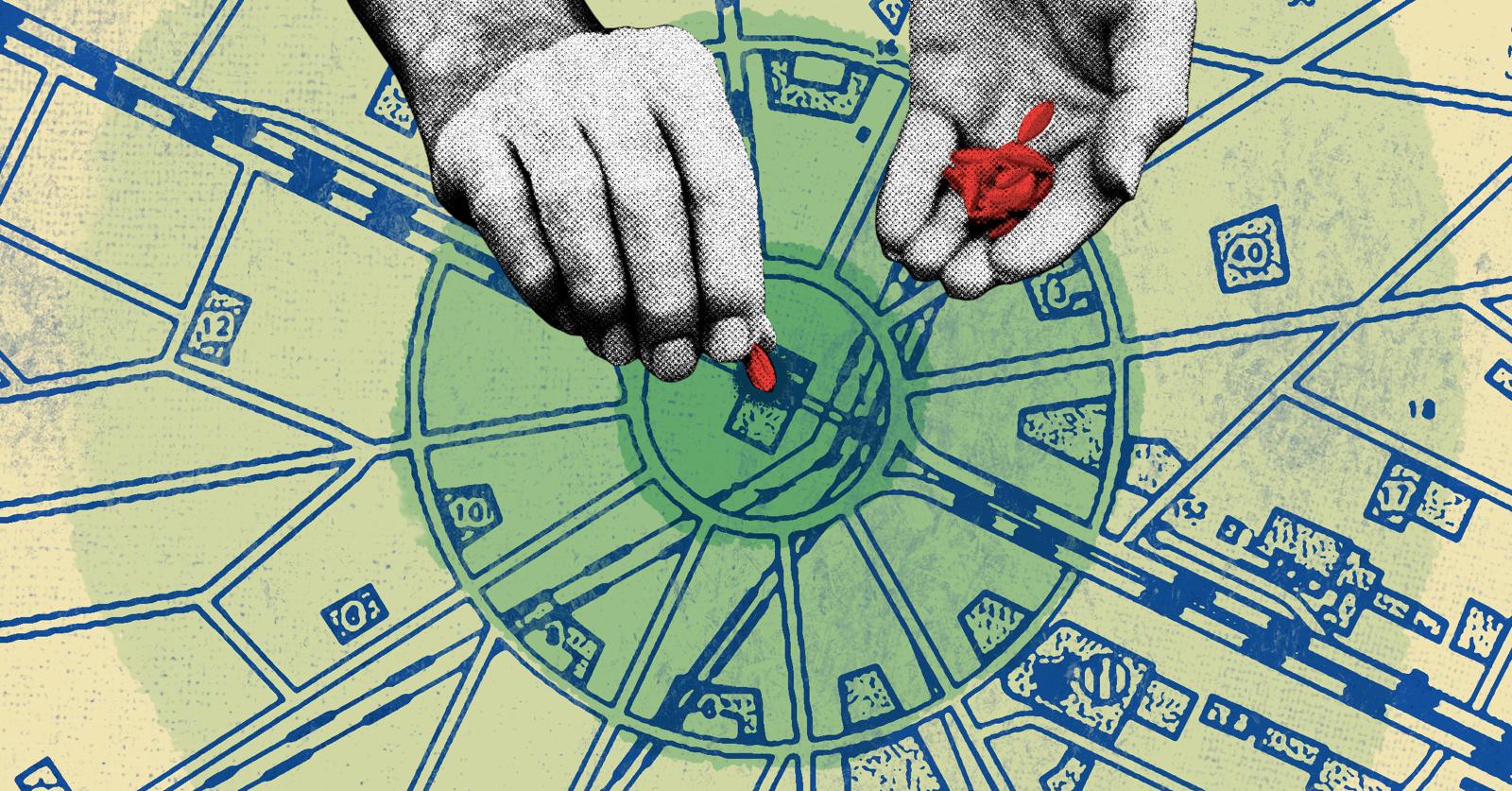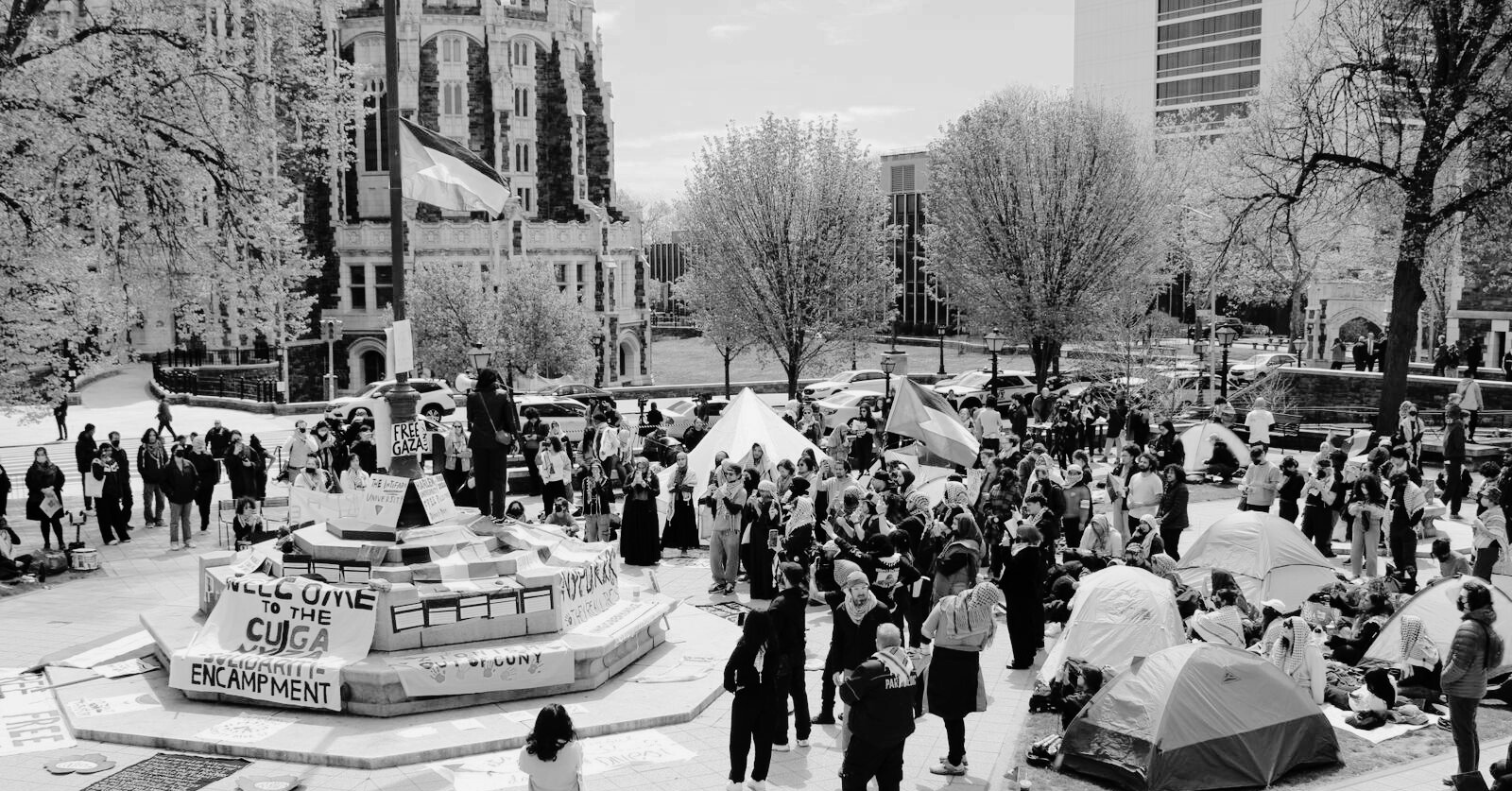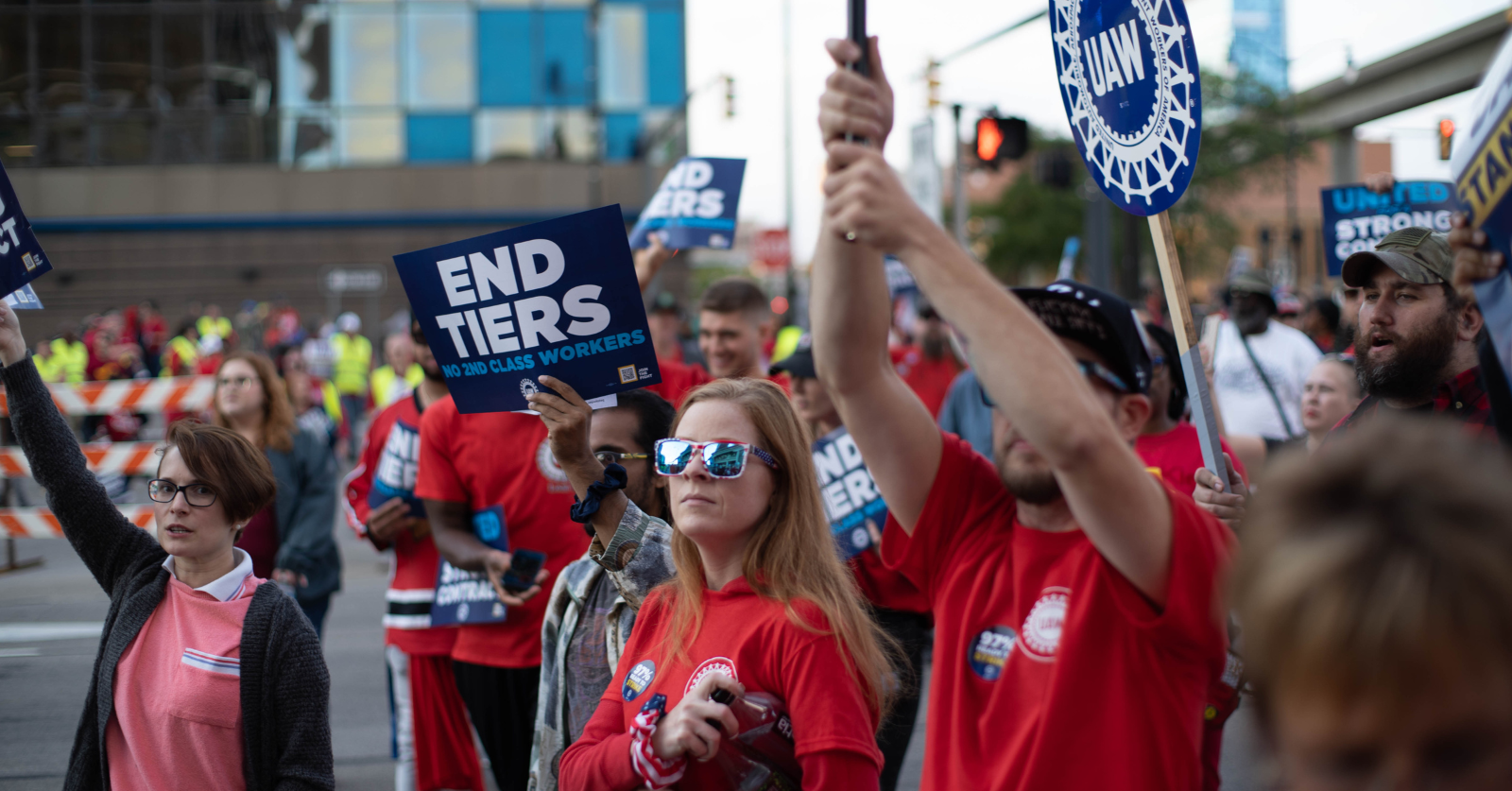The Call is publishing this response to an argument made by Nick French and Jeremy Gong in Jacobin about the need to build a new mass organization led by Bernie Sanders and the Squad. French and Gong have been invited to write a response.
In their recent article “To Win a Political Revolution, We Need a New Mass Organization,” Nick French and Jeremy Gong write, “the Left hasn’t been able to coordinate effective political interventions at the federal level, let alone exercise power. With leftists still a tiny minority in Congress, progressive priorities like Medicare for All and a Green New Deal are off the agenda, and even less ambitious reforms are consistently stymied by conservative Democrats like Joe Manchin.”
While we might be slightly more optimistic in our analysis given continued electoral success for the Left, historic wins in labor most notably at Starbucks and Amazon, and major mobilizations in response to the Supreme’s Court’s attack on abortion rights, French and Gong give a reasonably sober analysis of the moment. COVID-19 is still ravaging communities and there is a glaring absence of political leadership in the Democratic Party; infrastructure is in a constant state of disrepair; climate change is accelerating as can be seen in both extreme instances of catastrophe and day-to-day working and living conditions.
With the signing of the Inflation Reduction Act this week, the Democratic Party has successfully realized part of the agenda that Joe Biden ran on in 2020, even if a severely curtailed version. The bill becomes law, unmolested by the handful of amendments Bernie Sanders proposed to expand its protections. Most were voted down 99-1, showing the constraints socialists in office face without a coalition of ideologically sound organizations to pressure the corporate-beholden politicians of both parties.
Socialists shouldn’t be so naive as to believe we alone can win what’s needed. But the Democratic Socialists of America (DSA) — alongside unions, labor-left groups like Labor Notes, and movement organizations fighting for specific issues or campaigns — can play a major role in the fights to come.
What we cannot afford to do in this moment is to forfeit that opportunity by turning our efforts elsewhere. To try to cohere an entirely new organization would diminish our capacity and ability to work as a meaningful political bloc. Bernie’s 2016 and 2020 campaigns showed just how popular universal demands and a pro-worker platform are, but to realize our short- and long-term goals, we need a mass socialist organization too. The question now is: how do we make DSA the organization to meet this political moment?
Why Not Something New?
In their article, French and Gong lay out a series of principles that they believe should guide the work to create a new mass organization. It’s telling that the first principle is calling on Bernie, the Squad, and other individual political leaders to “build and lead this new organization.” While it would potentially be a welcome development to see Sanders and the Squad embrace nationwide working class organization, it’s unlikely for a myriad of reasons, and acts as a shortcut to solving the working class disorganization that plagues the modern Left.
Most of Bernie’s senior campaign staff already tried to build a mass, non-socialist political organization after the 2016 election with Our Revolution, and it ran into many of the problems that often arise when building new organizational structures — questions of funding, internal democracy, cohesion across geographic and demographic differences. The authors point this out, but their explanation for why this new organization would lead to a different result is insufficient.
French and Gong reference an argument made by Ben Beckett last fall in Jacobin. Beckett argued, French and Gong say, that “Sanders and the Squad could have built a powerful movement to pressure Manchin and Arizona senator Kyrsten Sinema by mobilizing with activists, including DSA members, battle-hardened teacher unionists — who led historic mass strikes in West Virginia and Arizona in 2018.” But they didn’t. We have no reason to believe they are willing to do so now.
Moreover, the success of their proposal primarily rests on 1) Bernie and the Squad leading it — something the hypothetical leaders of this hypothetical organization have shown no appetite for — and 2) it being democratic, something the authors give little indication of having a plan to achieve. Even if Bernie and the Squad were open to this possibility, it’s unclear how this organization would achieve a similar level of democracy as DSA, for example, which is unique in its member funding. It’s an unwise bet to place this much hope in individual electeds no matter how progressive they are.
Calling on Bernie and the Squad to create a mass organization is a shortcut that skips necessary preconditions to building working-class power. It’s not clear how we would cohere activists to follow a political leader into an organization based on a campaign that is nearly three years retired. The authors focus on discursive interventions and isolated tactics, rather than the “spade work” of building mentor networks, identifying the roles necessary for orientation and onboarding new members, how to facilitate the conversations necessary to solidify layers of rapid decision-making necessary to solidify local, state, and national infrastructure, and so on.
It’s true that we cannot, nor should we, create a precise blueprint, but part of why we disagree with the idea of creating a new mass organization is that DSA — as well as other progressive, issue-based organizations — already exists and has been refining these tactics and training newly politicized activists to use these skills for the long-haul work of building a mass organization. It makes more sense, then, for DSA to work in coalition with issue-based organizations and unions to reach a broader, non-socialist base to fight around certain issues than to create a new organization.
Finally, the authors correctly raise the issue of the lack of socialist organization in purple and red districts, among other shortcomings of our movement. But again, this problem won’t be solved by creating a new mass organization, which would eat at the limited capacity of an already thinly stretched Left. For democratic socialists that have made a lifelong commitment to building working-class power, our main collective task should be to build up the organization whose politics already encompass ours, even if we seek to participate in other working-class institutions.
A Mass Socialist Organization
Prior to Sanders announcing his 2016 presidential run and the subsequent “Trump Bump,” DSA had fewer than 10,000 members. Our organization is now nearly 100,000 members. It’s been several decades since we’ve seen a socialist organization in the US of comparable size, and arguably more importantly, it has organic ties to elected officials and trade unions. Any number of organizations in the “left ecosystem” could have sprouted in 2016, but DSA, most notably, did. We can’t take the presence of a near-mass socialist organization in the heart of the empire for granted.
DSA’s unexpected growth was the product of many things like its name and big-tent nature, but it was also partly a result of its decades-long infrastructure — including a small but determined collection of individuals and chapters that played a key role in keeping the socialist flame alive. This allowed the organization of roughly eight thousand members to absorb the surge of the American Left once the floodgates were opened by Bernie, and help solidify a new political horizon for millions of people. In the years since, we have balanced reacting to membership bumps catalyzed by larger political events (like the election of Donald Trump or the more recent example of over 1,000 people joining in the aftermath of the Supreme Court’s decision to strike down Roe v Wade) with intentional tactics and strategies to grow our membership (like hosting weekly DSA Q&A orientation calls for weeks after Bernie dropped out in order to bring in as many people as possible who felt they didn’t have a political home after the Bernie campaign concluded).
DSA is not perfect, but no organization is. At a time when segments of our organization are frustrated that our efforts aren’t yielding much, we should create space to engage in open and productive debate on strategy, organizational structure, and political priorities, but we can’t allow ourselves to become overextended and try to build multiple organizations at once. Especially since the chances are high that the organization that French and Gong are proposing would most likely not be dues funded, mass in character, or genuinely democratic. The solution to addressing working class disorganization is not a new NGO (of course that’s not what French and Gong want either, but we believe it is the most likely outcome of the strategy for building an organization that they propose). The solution is working in coalition with other organizations and labor unions to build an engaged political bloc.
The Path Forward
To assure DSA’s continued ascent to political prominence, the question becomes: what needs to be done to build our organization into the fighting force it needs to be to take on the capitalist class? Our basic tasks still remain the same. We need to rebuild the labor movement and build a class struggle electoral arm that is capable of and willing to challenge the establishment, with the hope of merging the two in the future into a workers party — and weaving political education and participation in mass movements through all our work.
Our fundamental task as organizers is to meet people where they are at and bring them toward us, not to meet people where they are at and institutionalize our differences by creating an organization that is not socialist. We can and should focus on deepening our roots in the segments of the working class not already represented well in DSA through coalition building and intentional recruitment. We also should not overstate the issue of DSA being primarily middle or professional class, something that has been historically present in socialist organizations past. This college-educated class strata is, after all, made up of workers. By continuing to put forward inspiring political campaigns augmented by projects like the DSA Recruitment Drive in 2020, which brought 15,000 people into the organization over a six week period focusing on member-to-member engagement, onboarding, and mentorship, we can continue to swell our ranks. By learning from the mistakes and errors made in the context of organization-building tactics like that recruitment drive (with more of a need to focus on political education and concrete campaign asks to plug those new members into) we can move the socialist project forward.
The American left pre-Bernie is something we cannot afford to return to. Chris Maisano reminds us in the opening of his article “A Left that Matters” what the days of old looked like: “The organization’s entire activist core was there, but the total attendance, including staff, official delegates, and observers, couldn’t have been more than two hundred. The most controversial topics were a floor vote on DSA’s affiliation with the Socialist International and reports that someone at the convention was pestering the center’s nuns about atheism. Media coverage was nearly nonexistent.”
But if we want to avoid returning to the pre-2016 left, we can’t risk what we already have built by trying to create a new organization. Instead, we should prioritize developing and cohering the nearly 100,000 members we have right now.
Socialists need to meet people where they are at, which means participating in elections, shop floor activity in the workplace, and, yes, social movements. At times these things will be mass in character, and ideally this will translate into a bigger, stronger DSA. There are countless examples of DSA chapters running campaigns and growing the organization while still being intentional about being in motion with the broad demands, needs, and interests of the working class — not just recruiting for inflated membership numbers, but charting a path that builds mass power and a vision for a new economic and political system for the many, not the few. Let’s take seriously the call to “[build] a fighting and democratic labor movement alongside an openly socialist and confrontational political movement, [so that] DSA can help lay the groundwork for a new mass party of and for the working class.” Let’s build DSA to win the world we deserve.




